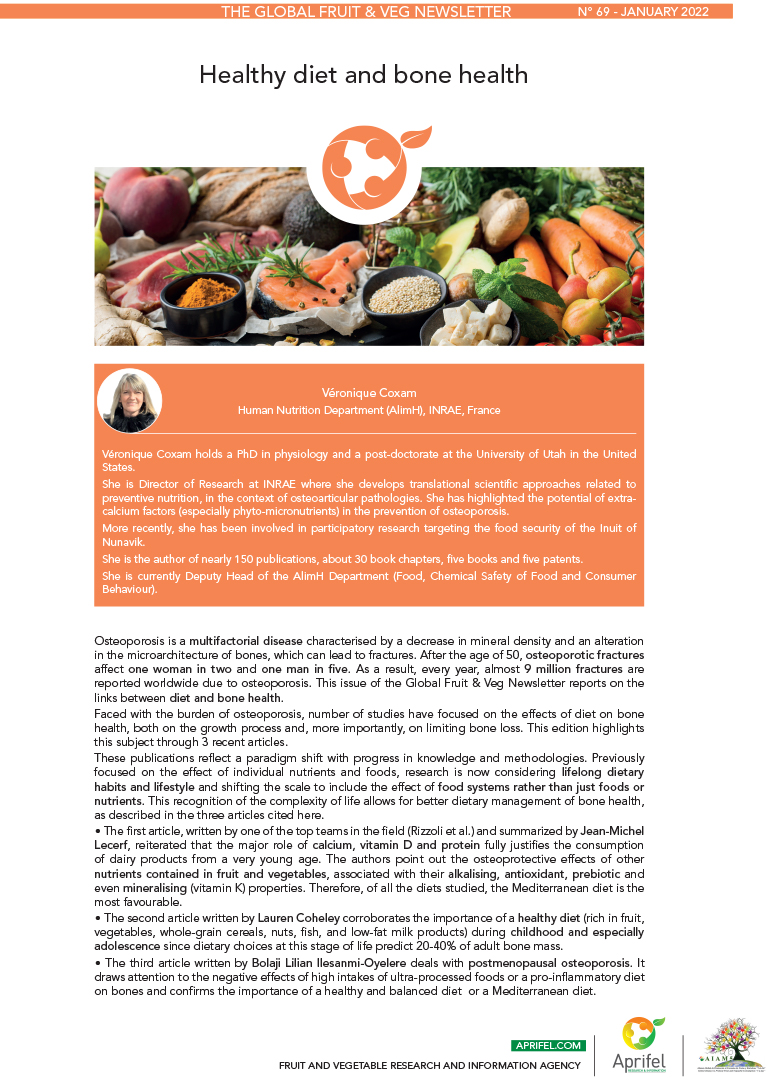Do dietary patterns influence bone strength in children ?

Research into dietary factors that influence pediatric bone have focused primarily on the role of individual micronutrients (e.g., vitamin D and calcium). Given nutrients are not consumed independently, but rather, consumed together, dietary pattern analysis has emerged as an alternative and complementary approach to examine the overall effects of the diet on bone health.
Dietary patterns represent a broader picture of food and nutrient consumption and may therefore, be more robust in producing positive or negative impacts on bone health (Hu, 2002). To date, many studies investigating the role of dietary patterns on pediatric bone are primarily cross-sectional in nature and target adult populations, with little focus on pediatric and adolescent bone. Given, establishing healthy bones during childhood serves as a blueprint for adult bone, it is important to better understand the role of dietary patterns on pediatric bone.
Thus, the following review aims to determine the association between dietary patterns and pediatric bone health.
Pediatric bone development, a blueprint for skeletal health in adulthood
Low bone mass is a key determinant of osteoporotic risk in adulthood and may be attributed to a failure to achieve optimal peak bone mass during childhood or the inability to slow bone loss in adulthood (Ferrari, 1998). Adolescents is a critical period of bone development with approximately 90% of adult bone mass being achieved by the age of 18 (Hansen, 1991). This rapid period of growth is important given bone mineral density tracts through childhood into adulthood (Kalkwarf, 2010). Thus, establishing healthy bones during childhood is imperative for skeletal health in adulthood. Moreover, given lifestyle choices during youth influence 20-40% of adult bone mass, optimizing factors known to influence peak bone mass and strength serve as important strategies to reduce osteoporosis or low bone mass later in life (Weaver, 2016).
Healthy dietary patterns may decrease the risk of low bone mineral density in children and adolescents
A recent systematic review found that a healthy or prudent dietary pattern, emphasizing the intake of fruit, vegetables, whole grains, low-fat, dairy products, fish, nuts and legumes may I ower the risk of low total body bone mineral density among children and adolescents (Movassagh, 2017).
Only 2 studies investigated the role of the “a priori” dietary patterns and bone health. One study found that a Mediterranean dietary pattern, associated with high intakes of fresh fruits, vegetables, whole grains, beans, seeds, nuts, and healthy fats, increased radius bone mineral density in adolescents (mean age: 13 years old), but the trend was non-significant (Monjardino, 2014). Moreover, another study demonstrated that adherence to a Mediterranean-based dietary pattern in adolescents (11-14 years old) increased the bone resorption biomarker, urine deoxypyridinoline and improve calcium absorption (Seiquer, 2007).
The association between a vegetarian dietary pattern and bone health in adolescents and young adults
A prospective study showed that the consumption of a vegetarian dietary pattern characterized by increased intakes of fruits (and 100% fruit juice), dark green vegetables, legumes, nuts and seeds, eggs, and low-fat milk during adolescence increased total bone mineral content and density, as well as, femoral neck bone mineral density and content, during young adulthood, an average of 15 years old (Movassagh, 2018).
Based on : Coheley LM and Lewis RD. Dietary Patterns and Pediatric Bone. Current osteoporosis Reports (2021) 19:107-114.
- Results from both “a posteriori” and “a priori” dietary patterns approaches in children suggests that diets rich in fruit and vegetables might be beneficial for pediatric bone.

